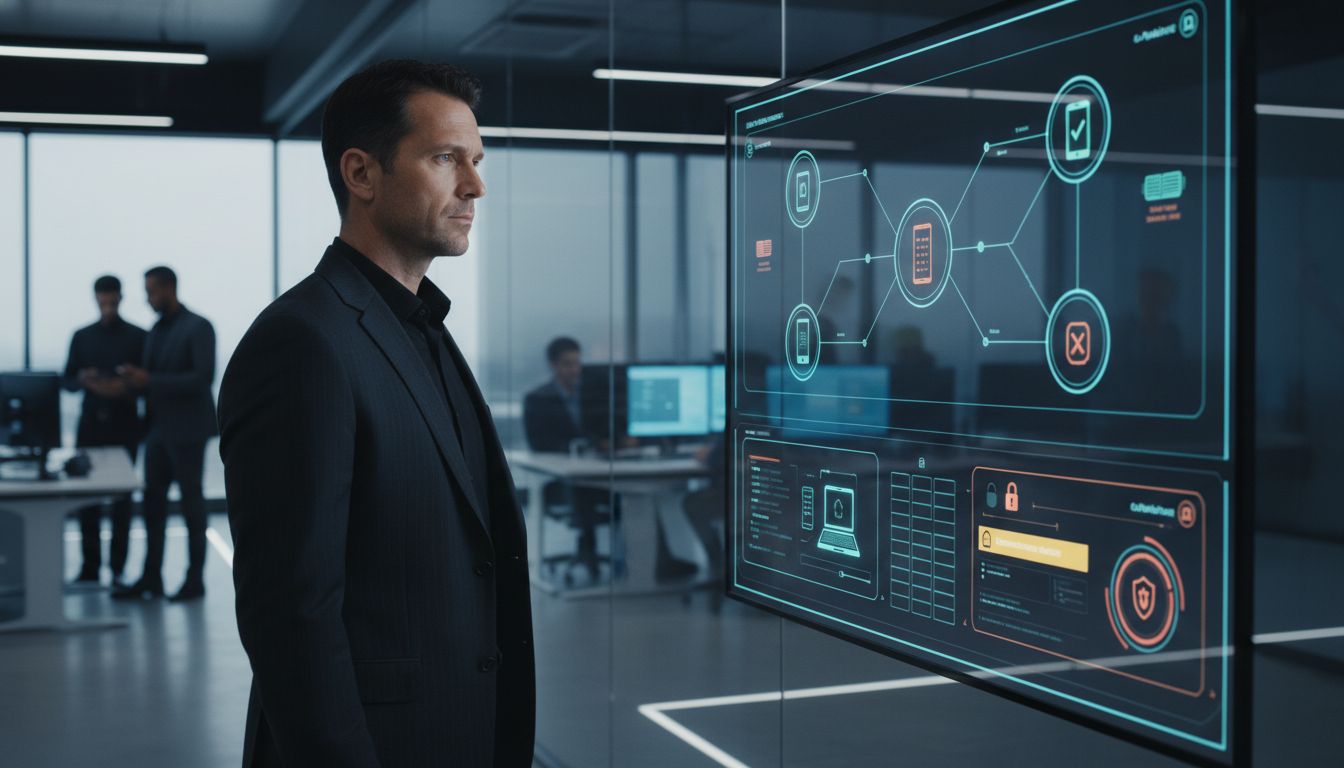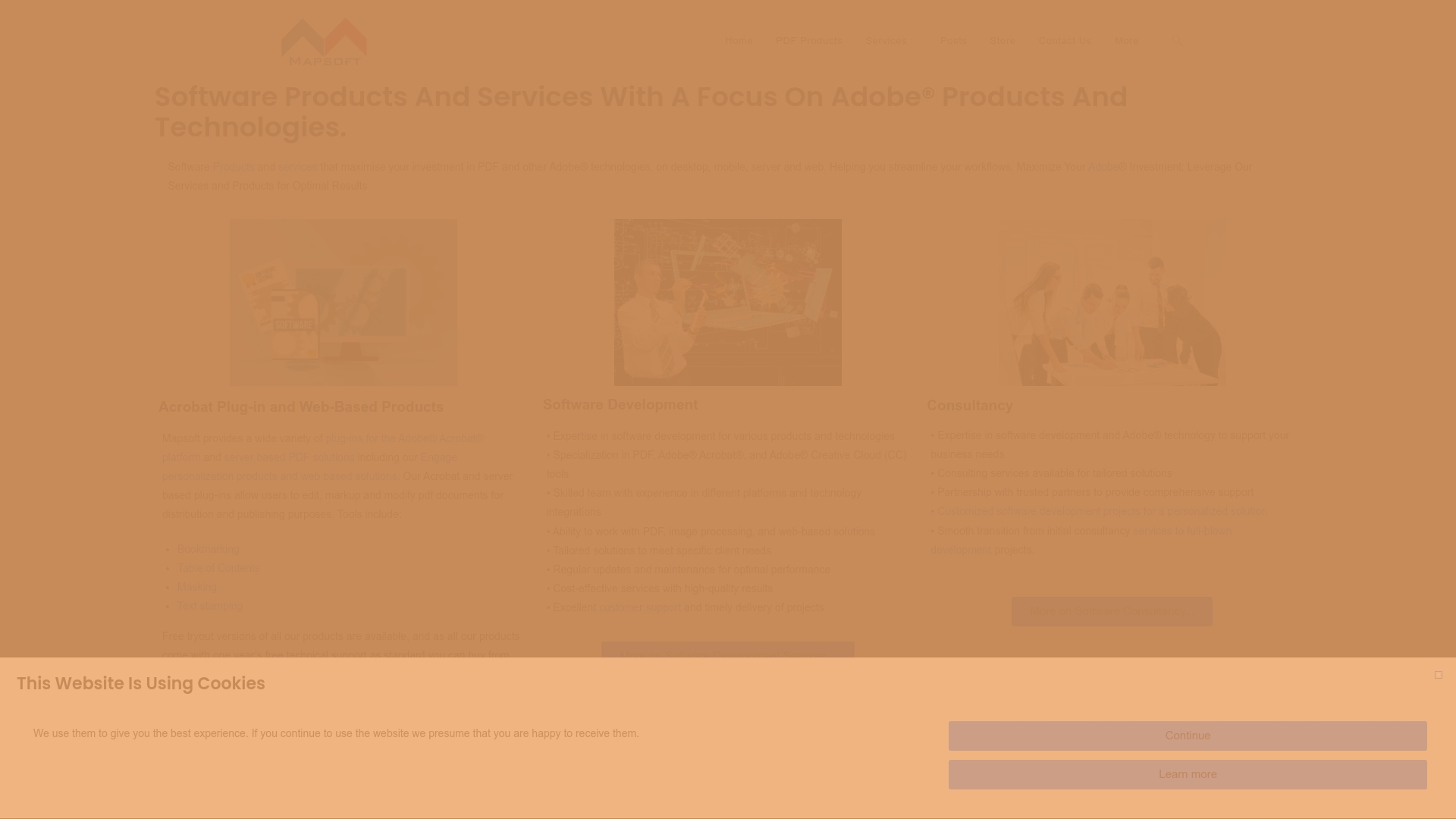Over 80 percent of organizations now support remote work as a permanent option, changing the very definition of business mobility. Companies that embrace enterprise mobility quickly discover how flexible work options can drive both productivity and satisfaction. If you want your business to operate smoothly in a world where employees rely on multiple devices and cloud tools, understanding modern enterprise mobility trends and technologies gives you a real edge.
Table of Contents
- Defining Enterprise Mobility In Modern Business
- Key Types And Technology Solutions
- Mobile Device Management And Security Trends
- Workflow Automation And Productivity Tools
- Challenges, Compliance, And Security Risks
Key Takeaways
| Point | Details |
|---|---|
| Transformative Work Model | Enterprise mobility allows employees to work from any location using various devices, enhancing productivity and responsiveness. |
| Key Technologies | Technologies like Mobile Edge Computing and Unified Endpoint Management are essential for creating secure and efficient digital workspaces. |
| Security and Management Strategies | Organizations should implement advanced mobile device management and security protocols to address challenges associated with mobile environments. |
| Workflow Automation | Embracing workflow automation tools enhances operational efficiency and supports informed decision-making across business processes. |
Defining Enterprise Mobility in Modern Business
Enterprise mobility represents a transformative approach to work that transcends traditional office boundaries. According to TechTarget, enterprise mobility is a work methodology where employees perform tasks from diverse locations using various devices and applications. This paradigm shift enables professionals to remain connected, productive, and responsive regardless of physical location.
Mobility Technologies power this revolutionary work model. Organizations leverage internet connectivity, cloud platforms, and mobile devices to create seamless digital workspaces. As Oxford Computer Training explains, enterprise mobility describes extending an organization’s tools and data beyond traditional physical boundaries, allowing employees to connect and conduct business effortlessly.
Key characteristics of effective enterprise mobility include:
- Secure remote access to corporate resources
- Cross-device compatibility
- Real-time collaboration tools
- Cloud-based data synchronization
- Robust mobile device management protocols
The evolution of enterprise mobility reflects broader technological trends: increasing digital connectivity, workforce flexibility, and the recognition that productivity is no longer confined to physical office spaces. Modern businesses understand that empowering employees with mobile technologies can significantly enhance operational efficiency, employee satisfaction, and competitive agility.
Key Types and Technology Solutions
Enterprise mobility technologies have evolved rapidly, offering sophisticated solutions that enable organizations to create flexible, secure, and efficient digital workspaces. Arxiv highlights Mobile Edge Computing (MEC) as a critical technology that brings computing resources closer to mobile devices, significantly reducing latency and improving overall performance for real-time applications.
Another pivotal technology transforming enterprise mobility is Unified Endpoint Management (UEM). According to Wikipedia, UEM provides a comprehensive software solution that offers a single management interface for diverse devices including smartphones, tablets, laptops, and IoT devices. This integrated approach allows organizations to manage and secure mobile applications, content, and collaboration across multiple platforms seamlessly.

Key technology solutions in enterprise mobility include:
Here’s a summary of key enterprise mobility technologies and their primary benefits:
| Technology Solution | Key Features | Main Benefits |
|---|---|---|
| Mobile Edge Computing (MEC) | Local data processing Low-latency support |
Faster response times Improved real-time performance |
| Unified Endpoint Management (UEM) | Single management interface Device diversity support |
Streamlined administration Enhanced device security |
| Cloud-Based Device Management | Remote device control Automatic updates |
Centralized management Scalability |
| Secure Containerization | Data isolation Encrypted containers |
Protects sensitive data Supports compliance |
| Multi-Factor Authentication | Biometric login Code verification |
Stronger access control Reduced unauthorized access |
- Cloud-based mobile device management platforms
- Virtual private network (VPN) technologies
- Mobile application management systems
- Secure containerization solutions
- Biometric and multi-factor authentication tools
The strategic implementation of these technologies enables businesses to balance employee flexibility with robust security protocols. By adopting sophisticated mobility solutions, organizations can create adaptive work environments that support remote productivity, protect sensitive corporate data, and provide employees with the technological tools needed to excel in a dynamic digital landscape.
Mobile Device Management and Security Trends
Mobile Device Management (MDM) has become a critical component of enterprise technology strategies, addressing the complex challenges of securing and managing diverse digital endpoints. Wikipedia highlights Unified Endpoint Management (UEM) as an evolved approach that integrates comprehensive capabilities for managing mobile applications, content, and collaboration across multiple device types.
Arxiv reveals emerging challenges in mobile device security, particularly with the rise of the Tactile Internet. This technological frontier demands ultra-low latency and high-reliability communication protocols, pushing organizations to develop more sophisticated security management strategies that can adapt to increasingly complex digital ecosystems.
Critical security trends in mobile device management include:
- Zero-trust security architectures
- Advanced multi-factor authentication
- Automated threat detection and response
- End-to-end encryption protocols
- Contextual access management
Modern enterprises are recognizing that mobile device management is no longer just about controlling hardware, but about creating intelligent, adaptive security frameworks. By implementing comprehensive MDM strategies, organizations can protect sensitive data, enable flexible workforce models, and maintain robust cybersecurity postures in an increasingly decentralized technological landscape.
Workflow Automation and Productivity Tools
Workflow automation has become a transformative force in modern enterprise environments, leveraging advanced technologies to streamline complex business processes. Arxiv highlights how the Internet of Things (IoT) enables real-time data collection and analysis, facilitating automated processes that drive informed decision-making across organizational ecosystems.
Enterprise portals play a crucial role in this technological revolution. According to Wikipedia, these frameworks integrate information, people, and processes by providing secure, unified access points that aggregate and personalize critical business data. Organizations can now boost team productivity through intelligent automation strategies that minimize manual interventions and maximize operational efficiency.
Key productivity tools and automation technologies include:
- Intelligent workflow management platforms
- AI-powered task routing systems
- Robotic process automation (RPA) solutions
- Machine learning-enabled predictive analytics
- Cloud-based collaboration interfaces
The future of enterprise productivity lies in creating intelligent, adaptive systems that can learn, optimize, and respond dynamically to organizational needs. By embracing these sophisticated workflow automation technologies, businesses can transform traditional operational models, reduce human error, accelerate decision-making processes, and unlock unprecedented levels of organizational agility and performance.
Challenges, Compliance, and Security Risks
Enterprise mobility introduces complex technological challenges that demand sophisticated management strategies. Arxiv highlights the critical role of High-Availability Clusters (HACs) in ensuring continuity of mission-critical applications by monitoring system health and seamlessly managing potential resource failures.
Wikipedia emphasizes that Unified Endpoint Management (UEM) tools are instrumental in addressing device diversity and security risks. These comprehensive management interfaces integrate capabilities for securing mobile applications, content, and collaboration across multiple endpoints. When organizations need robust protection, understanding cybersecurity essentials becomes paramount for maintaining secure digital infrastructures.
Primary security challenges in enterprise mobility include:
- Data privacy and protection
- Multi-device access management
- Compliance with industry regulations
- Preventing unauthorized data access
- Managing remote workforce security protocols
Navigating these challenges requires a proactive, holistic approach to security. Organizations must develop adaptive strategies that anticipate emerging technological risks, implement rigorous compliance frameworks, and create resilient systems capable of protecting sensitive information across increasingly complex and distributed digital environments.

Enhance Your Enterprise Mobility with Proven PDF and Workflow Solutions
The “Trends in Enterprise Mobility: Complete Guide for 2025” sheds light on the growing need for secure, flexible, and efficient mobile work environments. As your business adapts to challenges like managing diverse devices, ensuring data security, and automating workflows, you need software solutions that keep pace with these demands. Key pain points such as multi-device access and workflow automation can be addressed by integrating robust PDF handling and Adobe Acrobat® enhancements to streamline document processes on the go.

Unlock greater productivity and security by leveraging advanced tools designed for enterprise mobility. At Mapsoft.com, we specialize in tailoring Acrobat plugins and custom software development to optimize your document workflows and support mobile teams. Whether you require seamless PDF editing, secure document management, or automated batch workflows, our solutions empower your workforce to stay connected and efficient everywhere.
Take control of your enterprise mobility today. Explore how Mapsoft PDF Hub can transform your document management and boost productivity in distributed work environments. Visit Mapsoft.com to learn more and start optimizing your digital workplace now.
Frequently Asked Questions
What is enterprise mobility?
Enterprise mobility is a work methodology that allows employees to perform tasks from various locations using different devices and applications, enabling a flexible and connected workforce.
What are the key technologies that drive enterprise mobility?
Key technologies include Mobile Edge Computing (MEC), Unified Endpoint Management (UEM), cloud-based device management, secure containerization, and multi-factor authentication, all aimed at enhancing security and productivity.
How does mobile device management (MDM) contribute to enterprise mobility?
Mobile Device Management (MDM) ensures the security and management of diverse digital endpoints, enabling organizations to protect sensitive data and support flexible workforce models through comprehensive control over mobile applications and devices.
What challenges does enterprise mobility face?
Enterprise mobility faces several challenges including data privacy and protection, multi-device access management, compliance with industry regulations, preventing unauthorized data access, and managing the security protocols for remote workforces.
Recommended
- Understanding Enterprise Growth Strategies for Success –
- Unlocking Success with Mobile Document Management
- Unlocking Success with Enterprise Licensing Models
- Sustainable IT Practices: Complete Guide for Enterprises –
- 7 Types de connectivité internationale à maîtriser Nov-2025 | SimCornerUSA 7 Types de connectivité internationale à maîtriser Nov-2025 | SimCornerUSA
- 7 Top Digital Trends 2025 You Must Know for Growth
“@type” “Article”
“author”
“url” “https://mapsoft.com”
name” “Mapsoft
“@type” “Organization”
“@context” “https://schema.org”
“headline” “Trends in Enterprise Mobility: Complete Guide for 2025”
“publisher”
“url” “https://mapsoft.com”
“name” “Mapsoft”
“@type” “Organization”
“inLanguage” “en”
description” “Discover enterprise mobility trends: device management, remote work, security, automation, and workflow innovations in this comprehensive guide.
“datePublished” “2025-11-05T04:03:29.358Z”
––



